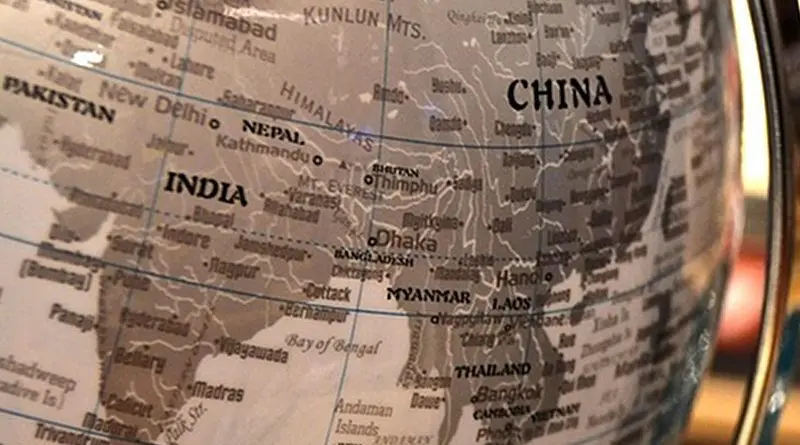Geo-Economics As Strategic Imperative Of Changing World Order In Indo-Pacific – OpEd
By Komal Khan*
The geopolitical and geo-economic competition in the Indo-Pacific region is specified by the intensified US-China competition to secure their national interests, however, at the cost of national security and stability of the third states in the region. The ongoing political crises in the states of Afghanistan, Myanmar and specifically, Pakistan and Sri Lanka present a state of decision paralyses as a consequence of the dynamics of the geo-economic competition between the United States and China in the Indo-Pacific.
US President Joe Biden’s Free and Open Indo-Pacific Strategy announced by the White House on February 11 seems to be a compulsion based on the policy of integrated deterrence and shared networking as a win-win game for the Indo-Pacific states with the objective of constructing creative collaborations that anchor the United States firmly in the region. The recent constitutional crisis accompanied with regime change in Pakistan may be analyzed as one such compulsion for Pakistan to restructure its geo-economic policies in balance with the United States regional interests aligned with the region.
The retreat in United States’ relationship with Pakistan has been identified with Pakistan’s fall into the China’s strategic camp as a leading security partner, and that also happened due to geo-economics led by China in the region. Cashing in on the realization, at the event of Islamabad Security Dialogue, Pakistan’s armed forces Chief General Bajwa proposed ‘counter investment’ as the only mechanism by which the United States can counter the intense Chinese influence in Pakistan. This proposal exhibits the state’s intention to partner with the United States in its Indo-Pacific economic framework while benefiting from the Chinese camp simultaneously. `
Hence, It is more geo-economics that has been framing the dynamics of security competition in this region. Another major feature of this geo-economic competition is the dollar diplomacy versus the re de-dollarization! Pakistan’s partnership in the de-dollarization drive supported by China, Russia and Turkey is another major cause of the regime change in Pakistan.
Pakistan initially signed a currency swap agreement with China back in 2011; however its extension by the State Bank of Pakistan in 2018 under the dynamics of the China-Pakistan Economic Corridor (CPEC) with the rationale of easing the dollar pressure over Pakistan’s stock exchange proved to be major developments seeking American concern. Since then, there was a significant increase in the value of the bilateral currency swap from 475 billion rupees to 731.7 billion rupees from 2020 to 2021. Notably, Pakistan also signed a currency swap agreement with Turkey back in 2011, while another with Iran has been in process since 2018.
Pakistan is not the only partner to the de-dollarization initiatives. On December 11, 2017, Thailand, Indonesia and Malaysia also entered a local-currency settlement framework, which was further extended in 2021. Sri Lanka also signed a $1.5 billion currency swap deal with China in March 2021, consequently falling victim to a constitutional crisis and regime change against Mahinda Rajapaksha led by an opposition coalition; hence, presenting a case similar to that of Pakistan.
Hence, Asia in general and the Indo-Pacific region in particular present an emerging de-dollarization axis. The US Department of Defense Indo-Pacific Strategy of 2019 and the Indo-Pacific Strategy of February 2022 identify Indo-Pacific as the primary consequential region for the United States’ future and the established world order based on the facts that the region accounts for 60% of world GDP, two-thirds of the world economy, and two-thirds of global economic growth. Indo-Pacific is equally crucial for the United States economy. It supports 3 million American jobs, and provides $900 billion in foreign direct investment (FDI) to the United States. De-dollarization in the Indo-Pacific would mean a major setback to the United States’ dollar hegemony.
China is leading the de-dollarisation axis in the Asia Pacific through its geo-economic influence. That is exactly why China presents itself as the claimant of its inexorable rise and of the United States’ irreversible decline. Even Americans have the realization of losing to China within strategic geo-economic competition, particularly within global periphery. According to Graham Allison, the US based academic expert on the transitioning world order, China’s gross domestic product would stand at twice the size of the United States’ in 2030, and three time by 2040 based on reports of China’s quadrennial add up of economy that is equivalent to India’s entire GDP.
The United States is accustomed to the correlation between GDP and its impact on world order which is significantly different. With a transformational increase in China’s GDP from 191 billion in 1980 to 14.7 trillion dollar today, China is rightly countered by the United States as the potential stakeholder in world order. As per CIA factbook and the IMF estimates, it is China who provides the most critical links in the supply chain.
Hence, the geo-economic competition between the United States and China in the Indo-Pacific is the potential determinant of the changing world order. China has been legalizing its influence through geo-economic partnerships with the third states in the Asia Pacific which the United States aims to counter by entering into similar integrated deterrence, however, having security implications for the states partnered.
*The writer is working as a Research Officer at the Strategic Vision Institute (SVI), a non-partisan think-tank based out of Islamabad, Pakistan.

